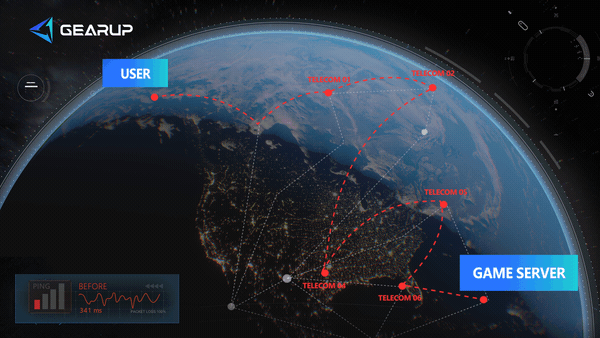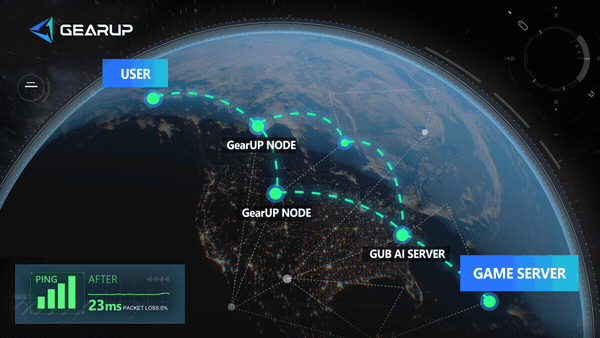ARC Raiders Packet Loss Fix: Fill the Invisible Potholes Before It Goes Live
ARC Raiders is here, and it’s built for crisp timing: quick peeks, clean dodges, coordinated bursts from a three-person squad. Nothing ruins that feel faster than packet loss. You press fire, the shot lands late. Your teammate blinks a meter to the left. Voice chat crackles just as you make the call. Think of this guide as the manual you read in advance so "ARC Raiders packet loss" doesn't headline your first night.
What Packet Loss Actually Looks Like in ARC Raiders?
- Snapbacks or "rubberbanding": your position gets corrected and you spring back a step.
- Late hit registration: you clearly land shots, the confirmation lags behind.
- Input swallow: a dodge or reload sometimes feels ignored.
- Choppy voice: outgoing audio breaks up, especially when your upload is saturated.
High ping is a tall mountain; packet loss is a hole in the road. You can walk around a mountain with planning, but a hole will catch your foot. Your goal is to flatten those holes so the route feels smooth.


Two-minute Diagnosis and Fixes
Join at your usual play hour for two to three minutes and watch patterns. If FPS is steady and your latency number isn’t awful yet you still see snapbacks and late hits, you’re likely facing loss or jitter. If the whole frame hiccups whenever effects fill the screen, you’re fighting performance instead. Name the main culprit so you don’t apply network fixes to a graphics problem.
Layer 1: Remove Noise at Home
- Prefer Ethernet. If Wi-Fi is your only option, play in the same room as the router and avoid three-wall paths.
- Pause background hogs. Cloud backups, game updates, and 4K streams eat upload and trigger loss.
- Reboot and update the router. Fresh firmware and a clean restart prevent slow memory leaks.
- Place the router in open air. Don't hide it in a cabinet or behind metal.
- Play off-peak when possible. Peak household usage creates micro-congestion that looks exactly like packet loss in ARC Raiders.
Small note on upload: saturated upstream is a packet-loss factory. Even if you're "only watching," apps quietly uploading photos or files can starve your game’s tiny packets.
Layer 2: Control the Route
Even if your home network conditions are perfect, data packets can still traverse smoothly over the public internet. At this point, the game traffic optimizer is worth trying. GearUP focuses on optimizing game traffic paths rather than relying on generic tunnels. It seeks clearer routes, avoiding congested hops and smoothing out minor packet loss (especially useful when Wi-Fi is unstable). You can noticeably feel the improved connection stability, and ARC Raiders lag is also reduced. This process is intelligent, requiring no manual network configuration adjustments from you, making it more efficient and precise.
Step 1: Click this button to download GearUP.
Step 2: Search for ARC Raiders and locate the game.
Step 3: Select a server—we recommend choosing one closer to your location to minimize latency caused by physical distance.
Step 4: Start the boost, where you can monitor real-time latency data, then launch the game.
Layer 3 Give Your Packets a Fast Lane
- Router priority (QoS or "Device Priority"): many routers offer a simple toggle that gives your PC first dibs when the household is busy.
- Cap heavy uploads slightly below your upstream max. If you must back up files while playing, set a modest limit so game packets don't line up behind giant transfers.
- Prefer wired backhaul for mesh/secondary access points. Wireless backhaul across walls often "grinds" your packets and creates bursty loss.
FAQs about ARC Raiders Packet Loss Issue
Q1: Should I watch ping or packet-loss percentage?
Both matter, but prioritize eliminating loss and jitter. Low ping with loss often feels worse than medium ping that’s rock stable.
Q2: How is GearUP different from a VPN?
A VPN moves all your traffic. GearUP targets game traffic, optimizes the route, applies packet-loss compensation, and lets you lock region and swap nodes without dragging your other apps along.
Q3: Do I need to open ports or tweak UPnP?
Unless the developers publish exact guidance, avoid random port lists. Stick to official instructions when they exist; otherwise focus on path quality and upload discipline.
Q4: Will a new router help?
If yours is old, overheats, or buckles under multiple devices, a stable gigabit-class router can reduce bursty loss. Try the steps above first, then upgrade if you still see "holes" during normal use.
The last word
Packet loss is an invisible pothole that punishes good decisions. Smooth your home network, take control of the route with tools built for game traffic, and coordinate a region that gives your squad a steady curve. Do that and “packet loss in ARC Raiders” becomes background noise instead of the boss fight. Your peeks feel honest, shots resolve when you fire, and the story of each match is written by your choices—not by missing packets.
About The Author
The End

